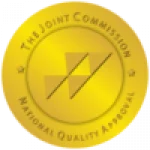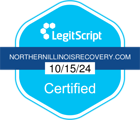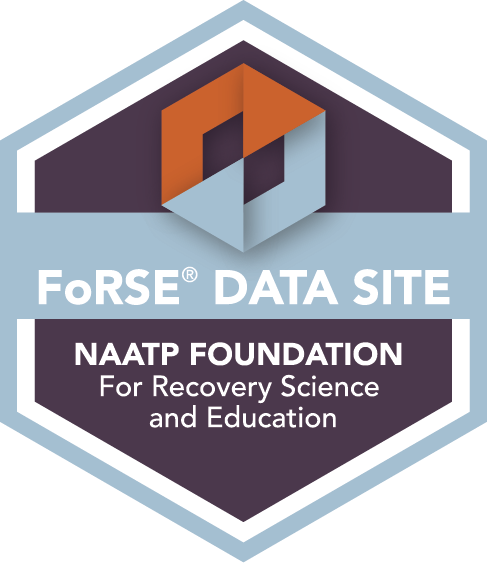Get an inside look at co-occurring disorder treatments in Northern Illinois
If you struggle with a substance use problem, you likely know how challenging recovery can be. But what if you also find yourself grappling with addiction alongside a mental health disorder, such as anxiety, depression, or bipolar disorder? This is what you call a co-occurring disorder or dual diagnosis, two conditions occurring simultaneously, in the same person, that a medical professional has diagnosed. Northern Illinois Recovery Center’s (NIRC) Dual Diagnosis Treatment Program is a recovery program for people facing this battle. Read on to learn about how it can help you if you’re struggling with substance use and mental health issues, and what makes NIRC’s co-occurring disorder treatment program so unique.
The Outlook on Co-Occurring Disorder Treatment
Co-occurring disorder treatment consists of treating both mental illness and substance addiction at the same time. For example, someone who has a dual diagnosis of PTSD and a Xanax addiction could have a treatment plan that looks similar to this: a client would undergo a full analysis of their mental, emotional, and physical symptoms, as well as a medical evaluation. This helps NIRC determine a detox plan, as well as identify the root cause of PTSD and addiction, and decide on therapy programs from there.
Isolated treatment of SUDs increases the likelihood of relapse, while only treating the mental health condition could lead to other mental illnesses or worsening of the initial illness. “Over my years helping people take steps toward recovery and sobriety, I’ve seen this happen time and time again—which is precisely why I’m so passionate about the power of co-occurring disorder treatment,” says Dr. Beth Dunlap, M.D.
As the medical director of Northern Illinois Recovery Center, Dr. Dunlap played a pivotal role in the development of NIRC’s dual diagnosis program. She is a board-certified addiction medicine and family medicine specialist, and her integrated treatment approach to co-occurring disorders has greatly contributed to the program’s high success rates.
“There are a ton of people who find substances and become addicted to them because the substance meets the need. We see this oftentimes where folks who struggle with depression end up using stimulants, and people who struggle with anxiety end up using depressants.”
Inside NIRC’s Dual Diagnosis Treatment Program
The recovery specialists at NIRC are no strangers to co-occurring disorders, especially Dr. Caitlyn McClure, DSW, LCSW, a licensed social worker and NIRC’s vice president of clinical services. Dr. Mcclure started her career in addiction recovery after she spent her studies dissecting the relationship between addiction and trauma. Since joining NIRC, she dove head-first into clinical team leadership, largely influencing the team’s forward-thinking and evidence-based client care approach.
This year alone, for instance, 21.5% of their clients have had a secondary diagnosis of major depressive disorder. In 2023, 51% of NIRC clients received a dual diagnosis of an SUD and mental health disorder, such as depression, anxiety, PTSD, ADD or ADHD, or insomnia.
“There are a ton of people who find substances and become addicted to them because the substance meets the need,” says Dr. McClure. “We see this oftentimes where folks who struggle with depression end up using stimulants, and people who struggle with anxiety end up using depressants,” Dr. McClure continued.
The most common age bracket for NIRC co-occurring disorder treatment clients is young adults between the ages of 17 and 24 years old. This age group presents different concerns than other age groups and is more likely to suffer from substance use due to a co-occurring disorder among other underlying external issues. NIRC’s young adult rehab program is specialized to treat this age group by focusing more heavily on the underlying issues leading to their substance use and will recommend programs best suited to each case.
In terms of gender-specific admission rates, male patients had a higher number of admissions in 2024 for co-occurring disorder treatment (59.5%) than female patients (40.1%). The reasoning for this? Dr. McClure explained that male patients, in general, have a higher number of admissions than female patients in co-gendered substance abuse treatment facilities.
In 2024, more male patients have been admitted for co-occurring disorder treatment (59.5%) than female patients (40.1%).
“I think that men seek treatment more often than women because they have some freedom in their life responsibilities,” says Dr. McClure. “We have a lot of women who don’t seek care or can only access lower levels of care because of their caregiving responsibilities to their children, their spouses, or their elderly parents, so I think part of it is that men often have a little bit more capacity, feel more stable in their jobs to be able to take time off, and [have other privileges] that allow them to access treatment [more easily].”
“This is precisely why we have dedicated staff, state-of-the-art facilities, and expert-designed treatment programs that support the path to recovery for individuals trying to tackle two co-occurring disorders at once,” says Dr. Dunlap.
Commonly, co-occurring disorder clients are enrolled in individual and group therapy sessions, as well as cognitive behavioral therapy (CBT) and dialectical behavioral therapy. “A patient is enrolled in one of our treatment services, and follows their individualized plan on their path to sober living,” says Dr. Dunlap.
Treat Co-Occurring Disorders at Northern Illinois Recovery Center
Co-occurring disorders are difficult to manage and are challenging to overcome, but you don’t have to go through it alone. At NIRC, we can help treat and manage your substance addictions and mental health conditions, and guide you towards the path to sober living. If you would like to find out more about our co-occurring disorder treatment, you can contact NIRC here.




